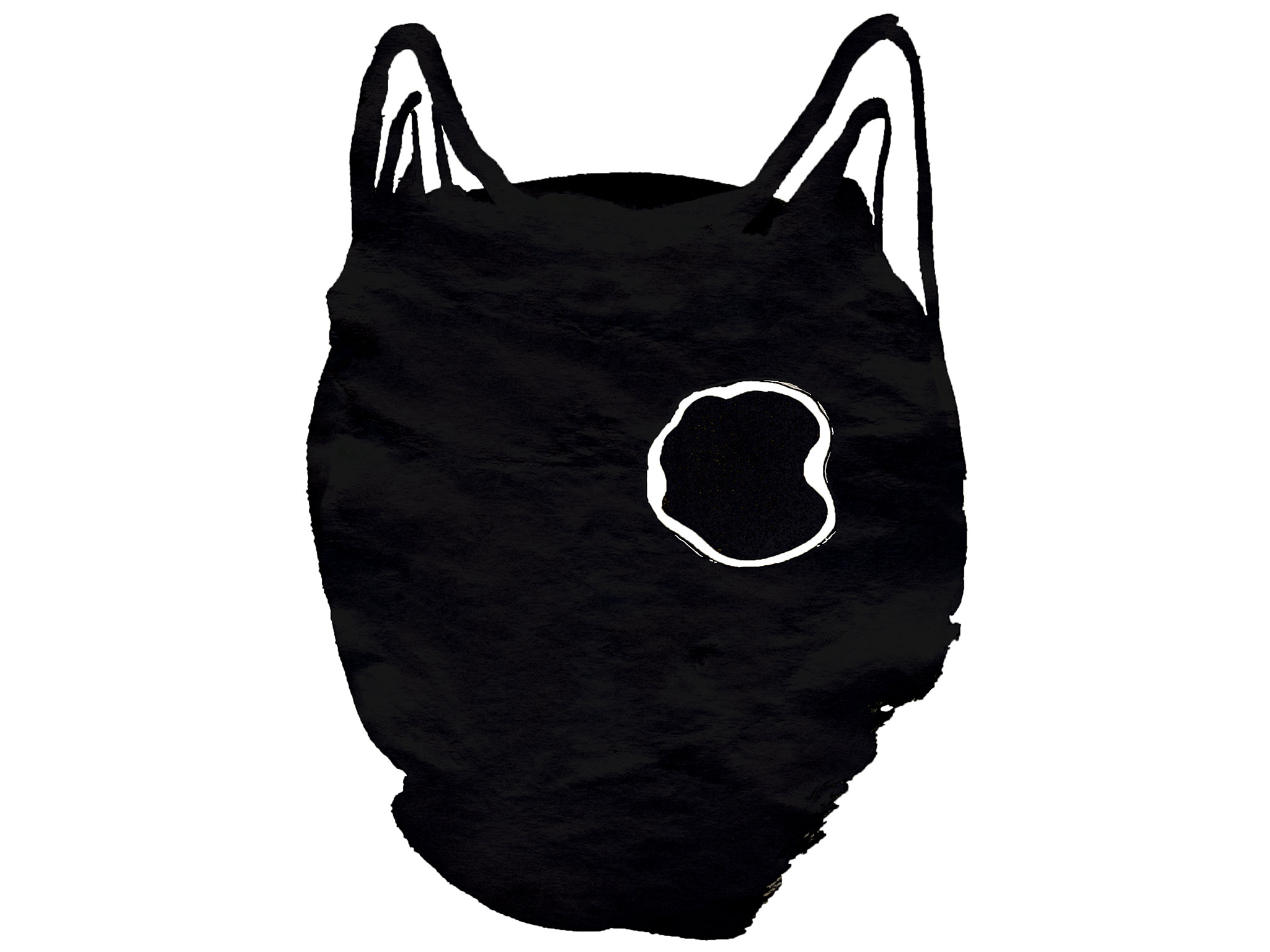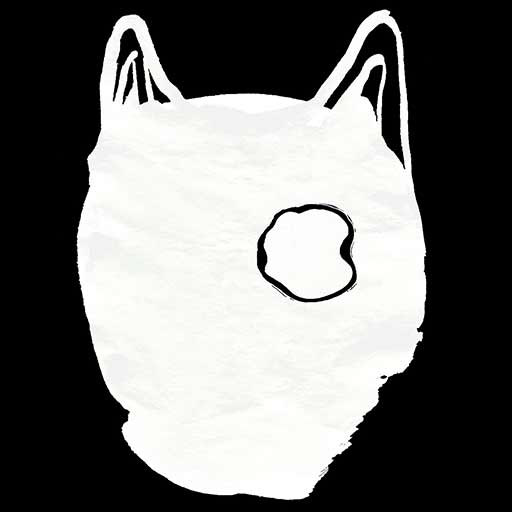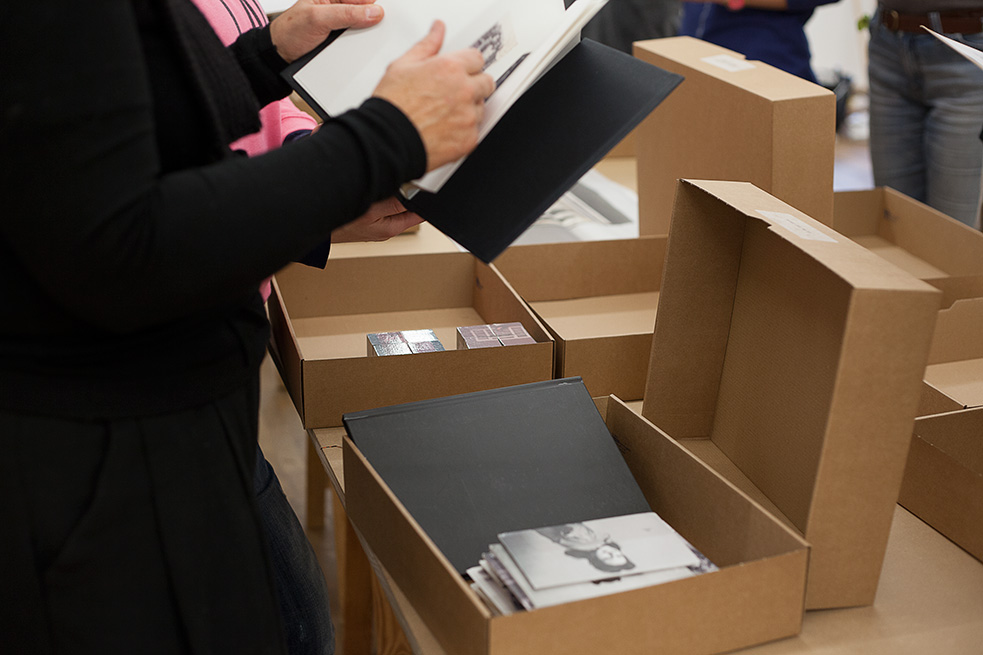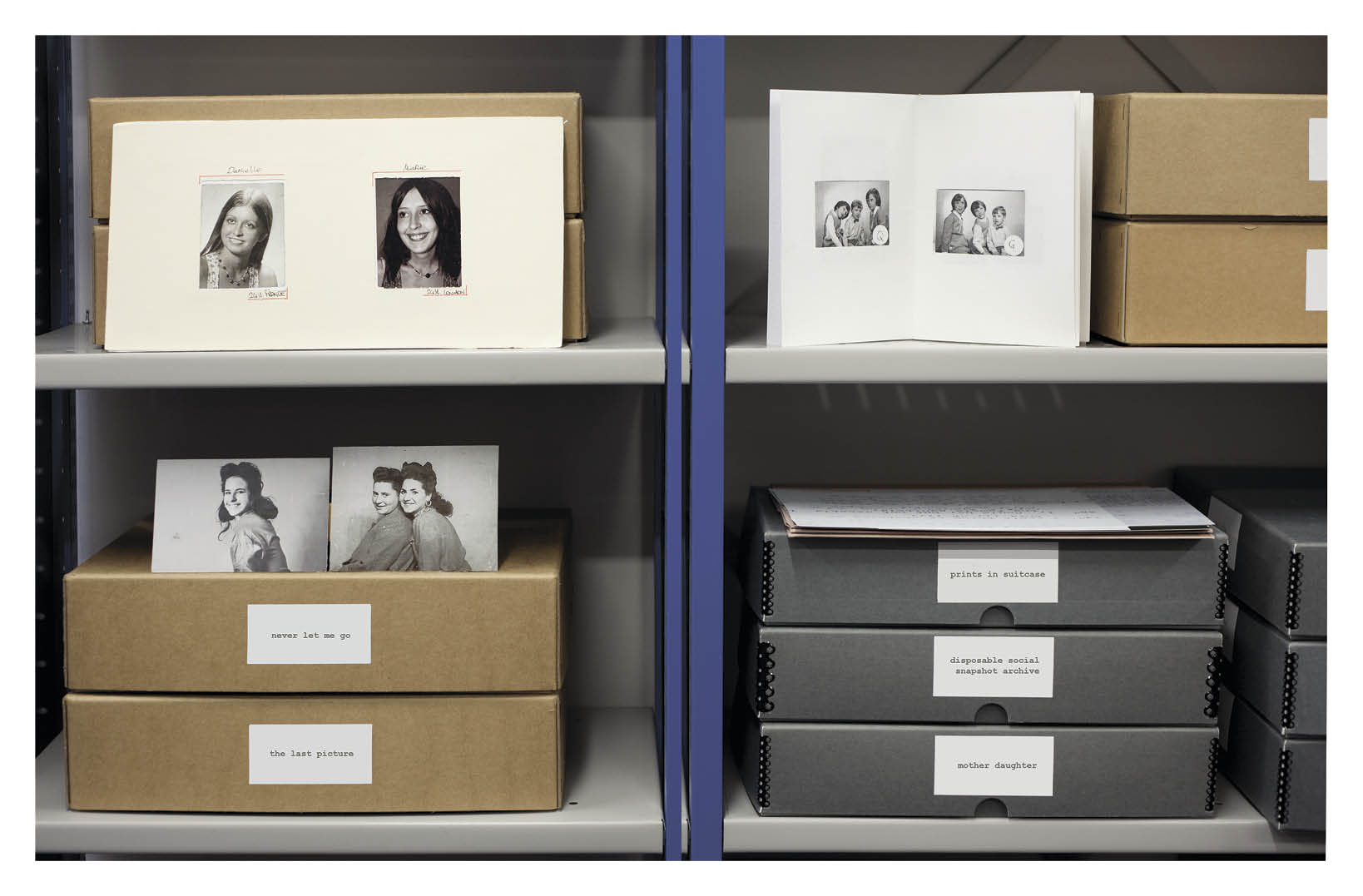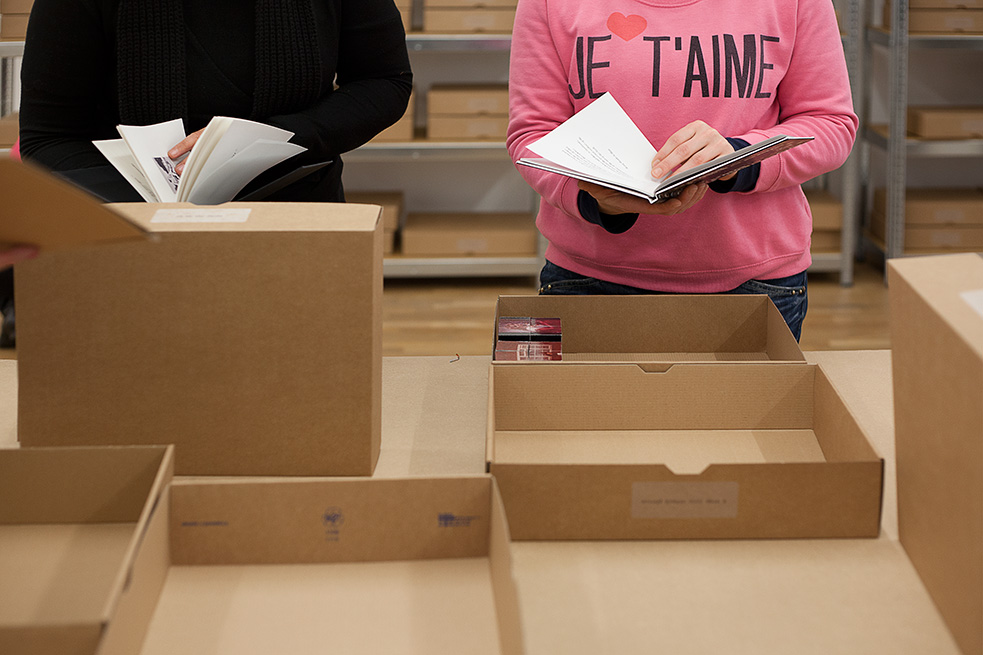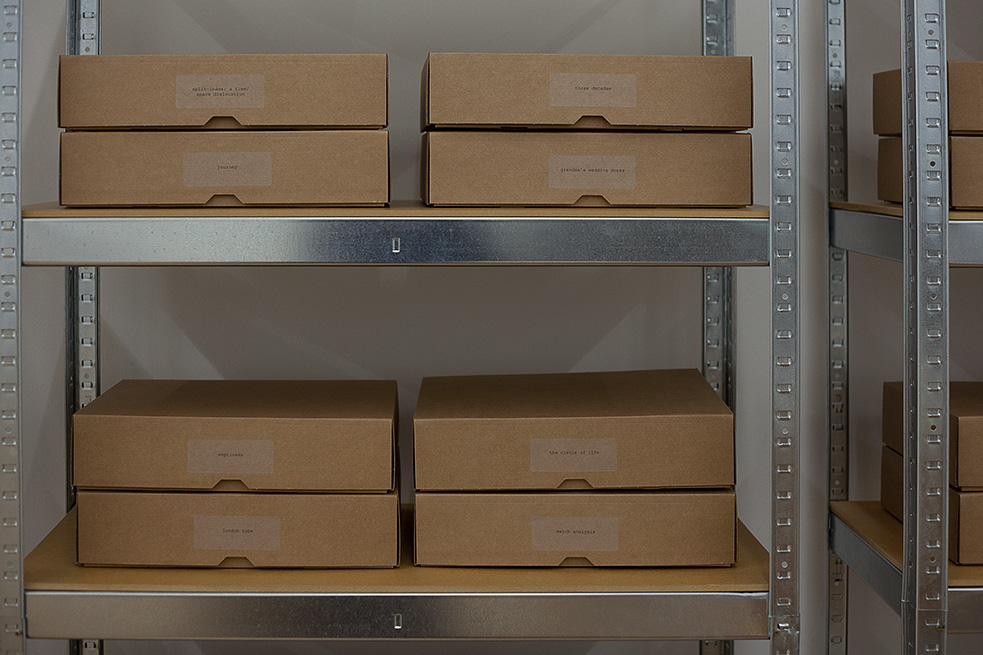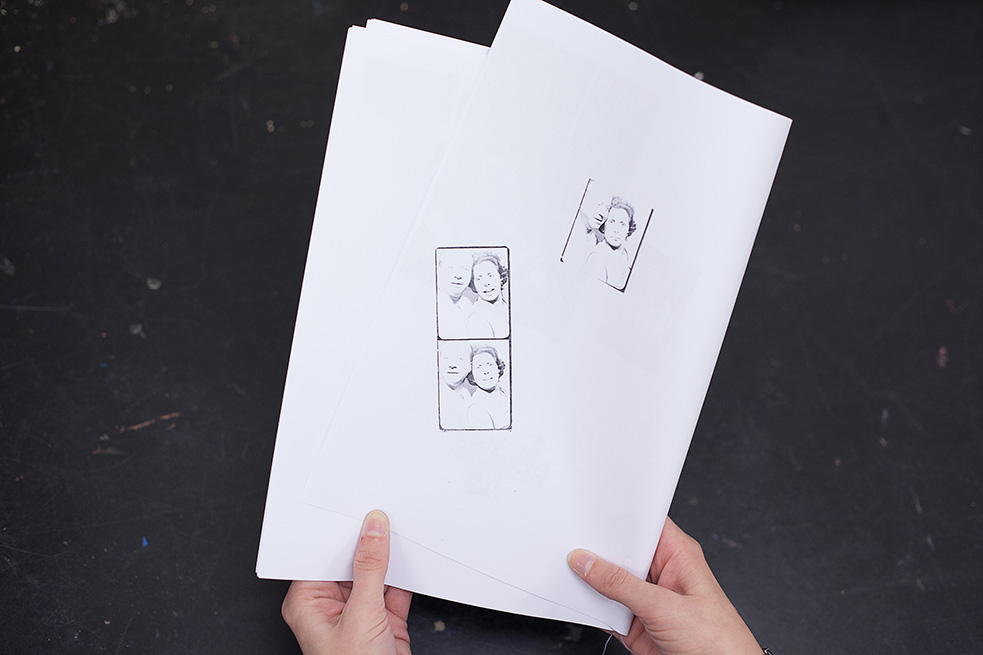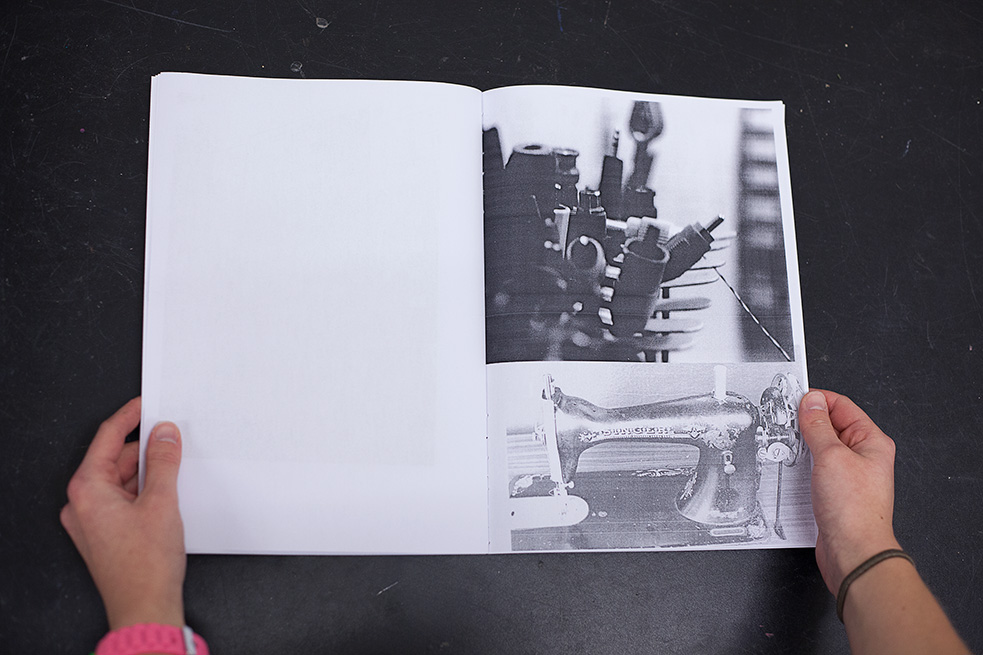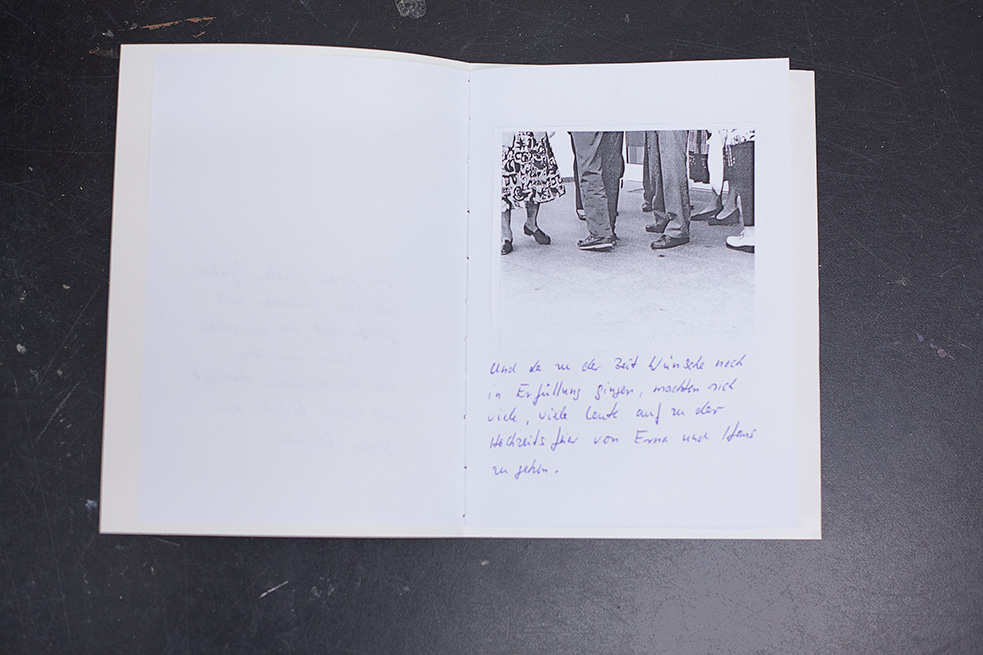TITLE WORK: Found Photo Foundation
AUTHOR: paula roush
MEDIUM: Participatory photographic,
publishing and archival installation
Metal shelves, trestle tables and archival boxes
with photographs and publications sourced from
the Found Photo Foundation collections
and FPF Found Photo Collection FPF Newspaper.
For more information on the newspaper work
see here.
EXHIBITION: Dear Aby Warburg: What can be done
with images? Dealing with Photographic Material
CURATOR: Eva Schmidt
With: Özlem Altin, Tobias Buche, Mariana Castillo
Deball, Marianna Christofides, Koenraad
Dedobbeleer, Katalin Deér, Thea Djordjadze,
Hervé Garcia, Cécile Hummel, Franziska Kabisch,
Ulrike Kuschel, Alexandra Leykauf, Elke Marhöfer,
Katrin Mayer, Lia Perjovschi, Manfred Pernice,
Abigail Reynolds, paula roush, Ines Schaber &
Stefan Pente, Eske Schlüters, Batia Suter,
Simon Wachsmuth and Haegue Yang
MUSEUM: Museum für Gegenwartskunst Siegen
YEAR: 2012-2013
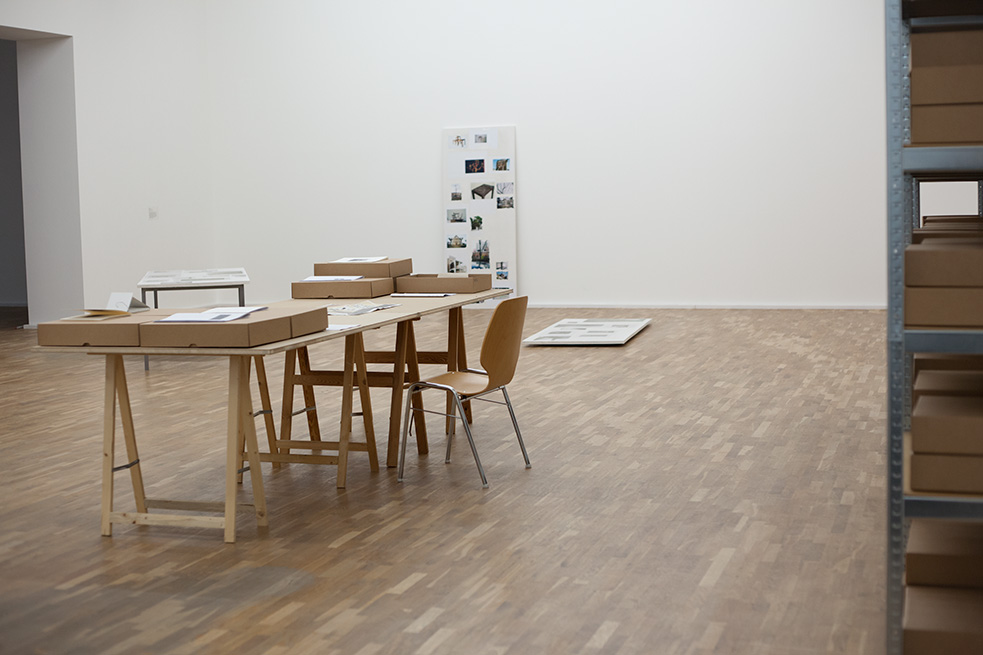
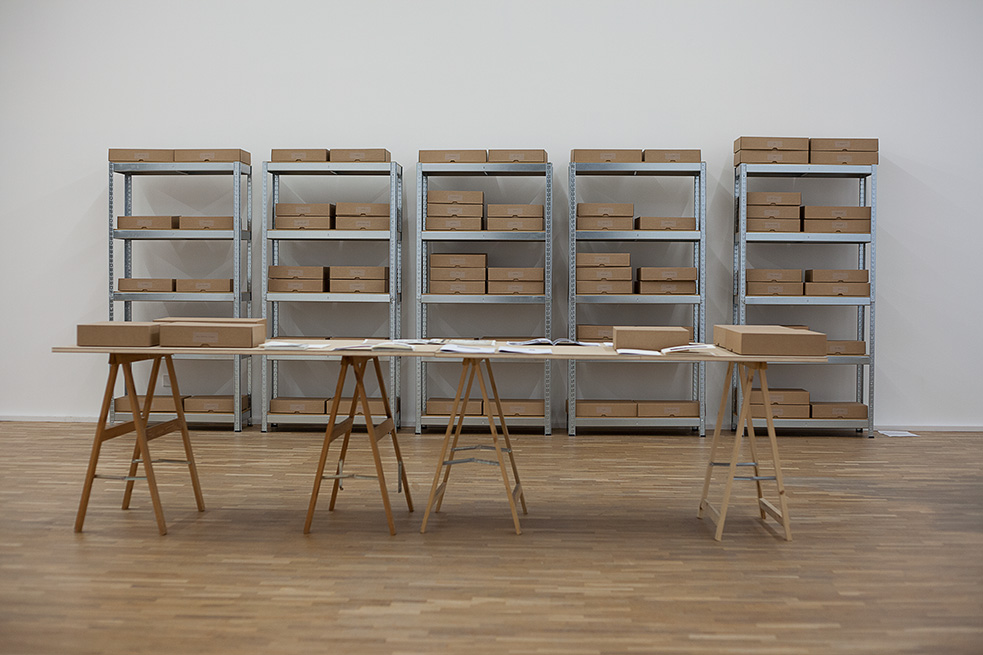
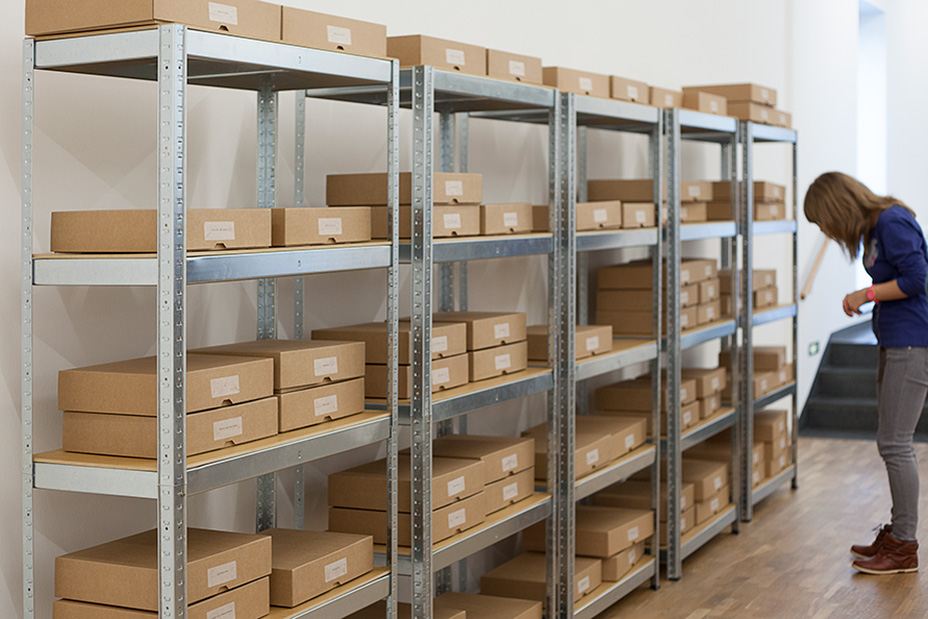
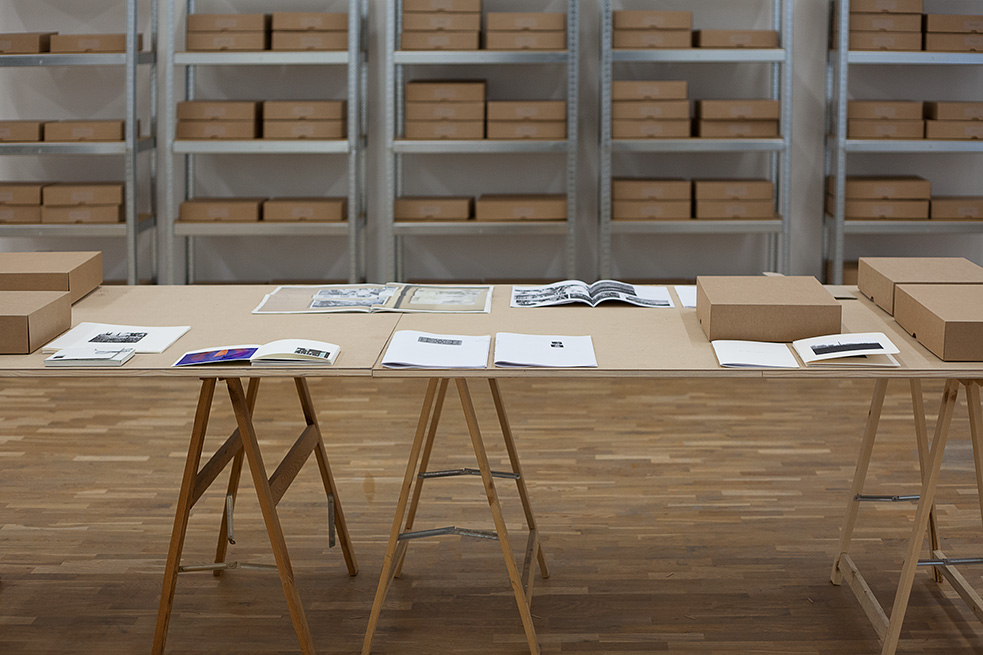
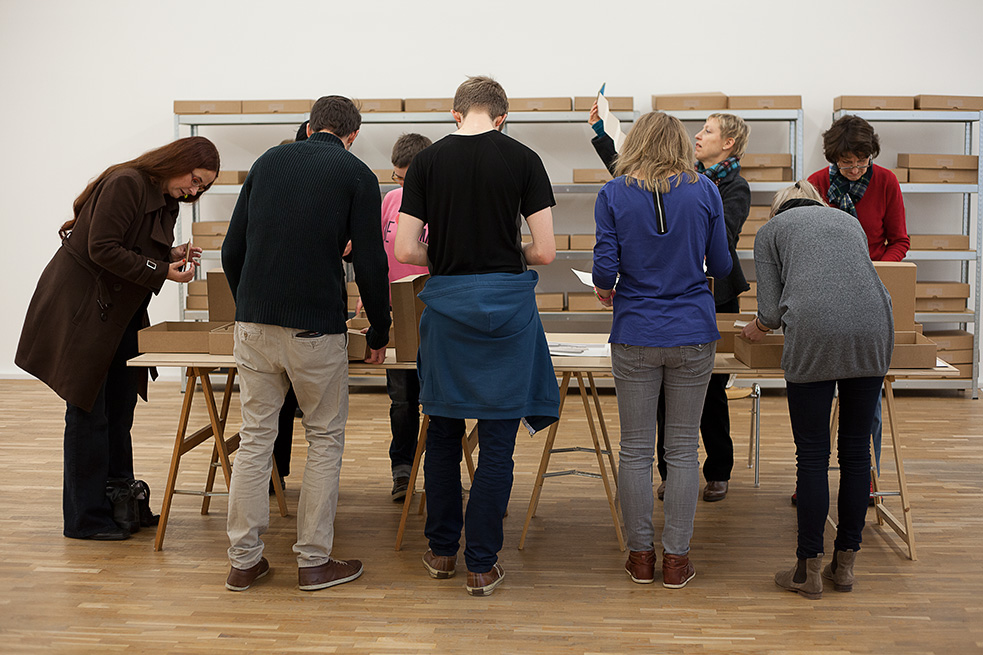
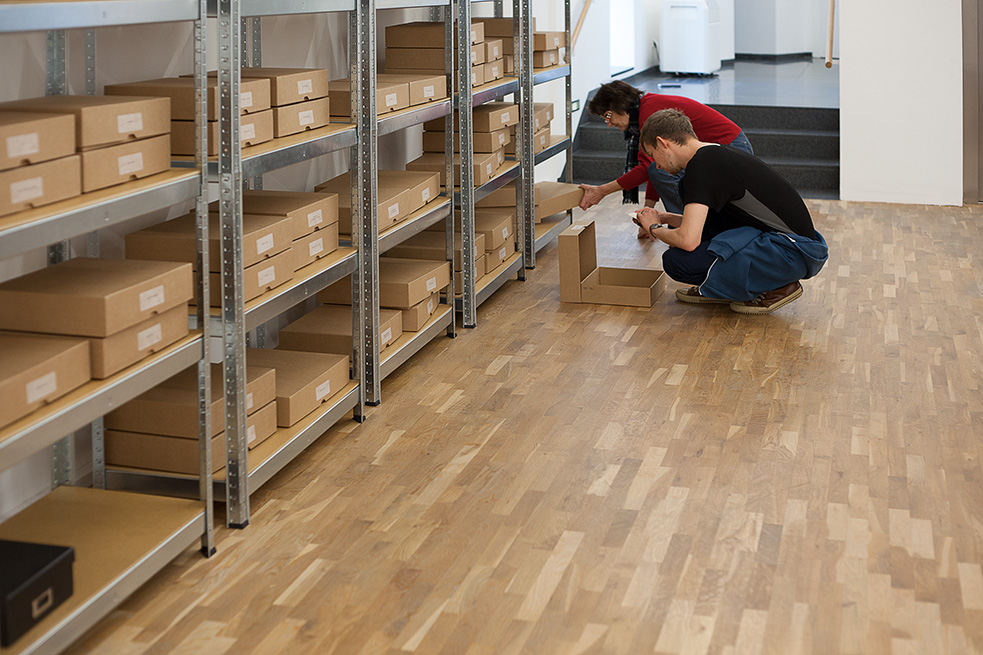
Chaos of Memories: Surviving Archives and the Ruins of History
According to the Found Photo Foundation
text by paula roush
Experimental Archives
fpfoundation's contribution to Dear Aby… consisted in the recreation of a grass-roots archive, inspired by two queer and feminist archives I visited in London: The Hall-Carpenter Archives, an archive of boxes of material relating to lesbian, gay, bisexual and transgender activism in the UK, most of the material dated from after the publication of the Wolfenden report in 1957 (11) and the Feminist Library, an archive collection of Women’s Liberation Movement literature, particularly second-wave materials dating from the late 1960s to the 1990s.(12) These are the kind of places where the boundaries between archives and everyday life are blurred, and is possible to find photo prints, slides, homemade zines, underground alternative press and other subcultural objects, sometimes in piles and disordered accumulations. Ann Cvetkovich suggests we should turn to these vernacular archives for inspiration on how to proactively document our (in)visible lives and to queer official archives instead of resigning ourselves to a critique of the archive that posits it solely as the site of (our) historical absence. (13)
Supported by the means of production that enabled fpfoundation to materialise itself in a wealthy public museum, I ordered ready-made metallic shelving units and archival cardboard boxes sourced from commercial providers. Inside were placed not just raw fpfoundation material (its collection of found photographs, family albums, commercial photography, postcards, historical photobooks, printed ephemera, photo surveys, and photo instructional materials) but also the visual re-presentation and re-appropriation of this material in projects based in and around the collection since 2007.
I had been interested in editorial authoring of found photos, and the role and status of the editor as author when appropriating ready-made printed matter. When I started lecturing in photography in London, (14) I took the opportunity to run several workshops on indie publishing, the photobook and artists strategies with archives.
I brought in the fpfoundation’s collection and the photographic material was for the first time catalogued using informal archiving methods, provisional taxonomies, temporary groupings and series.
Several photobookzines were then produced. I use this term to describe short-run, self-published, cheaply produced books, where the photographs are edited according to one selected topic, have an austere appearance of minimal design and layout often with one single photo per page and little textual narrative except for the indicative colophon.
An example of a work entirely sourced from the fpfoundations’ photos is Andreas Obexer’s photobookzine Discipline (2010), using portuguese found photographs from police and maritime academies. Other conceptual investigative methods of appropriation included the combination of a spanish family album and reenactment in Sara Soupdemots’ Never let me go (2011), a photobook that resulted from a photo-therapy process realised with her grand aunt in the initial phase of alzheimer disease. These and many other photobookzines produced during the workshops along with the photo collections were shipped to the museum in Siegen where I came to organize them, with a cataloguing system that addressed the material characteristics of the photo objects whilst allowing a hands-on experience of the archive.
11 The Hall-Carpenter Archives is named after the authors Radclyffe Hall and Edward Carpenter, and was founded in 1980. See http://hallcarpenter.tripod.com/
12 The Feminist Library was set up in 1975 and is run by a team of volunteers. See
http://feministlibrary.co.uk/
13 Ann Cvetkovich, “Queer Archival Futures: Case Study Los Angeles” In On the subject of archives, eds Marianne Hirsch and Diana Taylor, Vol 9 (1 and 2), 2012. See
http://hemisphericinstitute.org/hemi/en/e-misferica-91/cvetkovich
14 At the London South Bank University with the BA and MA Photography courses.
15 Provenance is a fundamental principle of archives, referring to the individual, family, or organization that created or received the items in a collection. The principle of provenance or the respect des fonds dictates that records of different origins (provenance) be kept separate to preserve their context. See Richard Pearce Moses, A Glossary of Archival and Records Terminology, 2005, http://files.archivists.org/pubs/free/SAA-Glossary-2005.pdf
16 Tanja Verlak, An attempt at exhausting an archive /Found Photo Foundation, In Dear Aby Warburg, what can be done with images? Dealing with photographic Material, 278. The text is also part of newspaper published to be part of the installation (London: msdm publications, 2012)
17 Eva Schmidt, Foreword and Acknowledgements, In Dear Aby Warburg, what can be done with images? Dealing with photographic Material, 13.
The taxonomies developed for Siegen included provisional references to fictive documents, queer affects, collage history
and the contested space of the archive itself. The archiving order ignored the principle of provenance 15 generally used in institutional archives, opting instead for the introduction of chaos into the grid arrangement of the boxes. The viewers, invited to browse woudn’t know what to except from labels such as: dust, excessive, embodied researcher, evidence, hairs, fictional identity, fingerprints, hannah höch / til brugman, instructions on how to survive the archive, lusciously tactile, matt and stupid, messiness, passing, photo re-enactment, prints in suitcase, strokable. Elucidating the use of experimental taxonomies, Tanja Verlak pointed out in the exhibition’s publication: ‘The fpfoundation can be read as an artistic experiment of twisting the document value of an archive beyond its proverbial linearity of causes and consequences. As the connection to the real is often lost, the project is above all a platform of invented spaces that suggests taxonomical methods of artistic research deep into generations and the unknown.’16
In addition to the provisionality of taxonomies, another strategy to keep the archive open has been the foregrounding of participatory tools. A workshop for Siegen-based artists-educators that were invited to bring their personal images archives for remix, was a critical opportunity to reflect on ethical as well as aesthetical aspects of working with collections of images. Quoting Eva Schmidt, again: ’How can photographic images thought lost – due to a lack of place or name– be re-found and made to speak to us again? The significance of a photographic image does not lie in the image itself; the decisive aspects are its context and actualization as material object. (…) The fpfoundations’ work consists in tracking down photos that have become homeless (…) and invite others to ‘adopt’ these ‘orphans’ in their own configurations.’ 17
The inclusion of studio trestle tables next to the shelved boxes opened up the fpfoundation’s play with historical material, a temporal process of editing and montage so crucial to an understanding of Warburg’s strategies: from individual ‘signature’ to collaborative authorship, from working with a personal family album to the appropriation of orphan photographs, from the absence of writing to the collage of text and image, from the incorporation of an ‘original’ print to the reproduction of images using a photocopy machine.
READ MORE on the Found Photo Foundation here
BIBLIOGRAPHY:
paula roush
Chaos of memories- Surviving archives and the ruins of history
according to the found photo foundation.
Order and Collapse: The Lives of Archives
Tanja Verlak
An attempt at exhausting an archive /Found Photo Foundation
Dear Aby Warburg, what can be done with images?
Dealing with Photographic Material
Museum für Gegenwartskunst Siegen
Ludwig Seyfarth
Space for thinking between the images: on the genesis of the
‘photographic collection’ as an artistic genre.
Dear Aby Warburg, what can be done with images?
Dealing with Photographic Material
Museum für Gegenwartskunst Siegen]
Eva Schmidt
Foreword & Acknowledgements
Dear Aby Warburg, what can be done with images?
Dealing with Photographic Material
Museum für Gegenwartskunst Siegen
Christina Natlacen
Lieber Aby Warburg, was tun mit Bildern?
Vom Umgang mit fotografischem Material
Museum für Gegenwartskunst
Siegen Camera Austria 121
Noemi Smolik
Album Art Aperture reviews
Tanja Verlak
Excavation Thrill. In conversation paula roush
and Tanja Verlak
Nowiswere Contemporary Art Magazine issue 12.
[catalogue]
[ museum website]
[press release: e-flux]
ABOUT THE EXHIBITION
The exhibition "Dear Aby Warburg: What can be done
with images? Dealing with Photographic Material shows 22 younger positions of contemporary art that handle photographs—usually photographic reproductions or found photos—in a specific fashion. Starting out from an enduring fascination with the Mnemosyne Atlas by Aby Warburg, this reference in the title also pays homage to the ‘artistic’ art historian.
While two projects refer in a concrete way to the work of Aby Warburg, the references of the other works are more associative in character. Today—from the viewpoint of contemporary art—we value Warburg’s Mnemosyne Atlas because it displays variable, non-systematic ordering parameters, but also because the combination of divergent picture sources and their carrying materials and fixtures—as an aesthetic unity—appears extremely provisional and haptic. The new availability of reproductions in Warburg’s time suggested the examination of images and their potential for making a statement in conjunction with other images, and the proposal and testing of hypotheses with the aid of such ensembles. Today, the availability of reproduced images is taken for granted more than ever.
An interest in photographic material, in the carriers of this material, or in the spatial staging of such material—temporal sequences in slide projections and film as well—cannot be overlooked in current art practice. Besides collection, accumulation, archiving and ordering processes, the exhibition also shows hybrid combinations of photographic material with painting and sculpture.
Photographic material in combination with other artistic media makes clear how we can conceive the discursive potentials of photography beyond the constellation of the individual image or the series. Expressive arrangements, interweaving, montages and formations reveal the ways in which photographic images can be made to speak. The meaning of a photographic image does not lie in the image itself; its context and actualization are decisive. The way artists deal with images, as the exhibition will show, is a practice that is both aesthetic and ethical.
